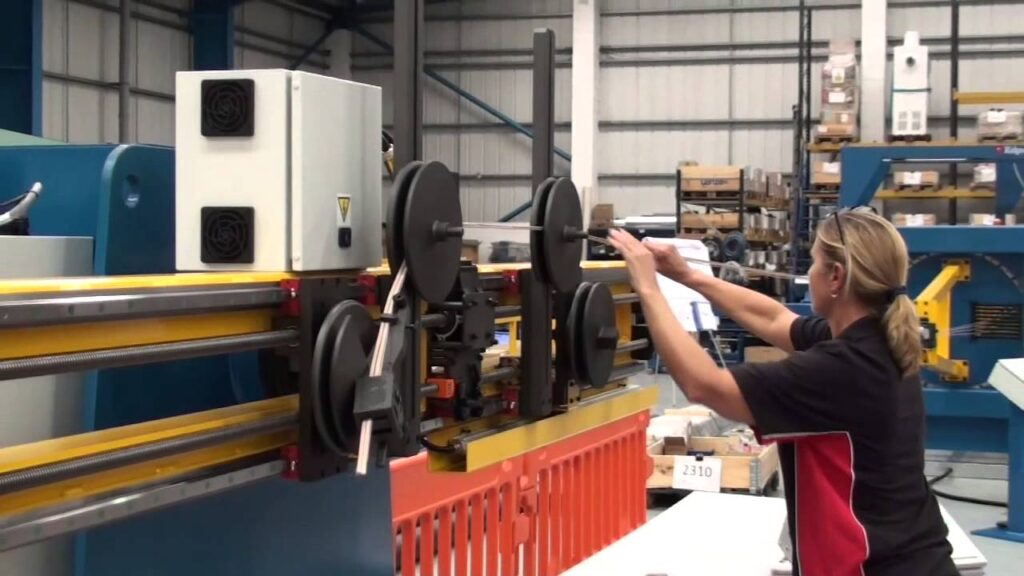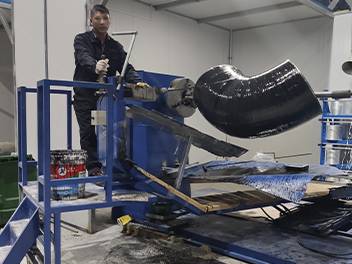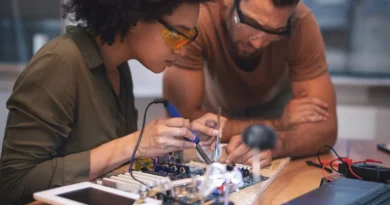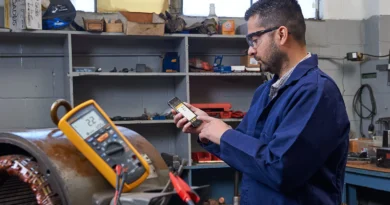Winding Operator (6 Month Diploma)
Winding Operator (6 Month Diploma)
Winding Operator: The Winding Operator winds film or wire on core using
automated or semi-automated winding machines for manufacturing
capacitors or resisters.

Brief Job Description: The individual at work operates the semi-automated or
programmed winding machine to wind metal-alloy wire or metalized film on
to a core in the process of manufacturing a resister or capacitor. The
individual also sample checks the resistance or capacitance of the winding.
Personal Attributes: The job requires the individual to have: steady hands,
ability to concentrate and work in a steady position for long hours.
Undertaking preventive maintenance
To be competent, the user/individual on the job must be able to:
PC17. perform regular cleaning of machine, equipment and work area as prescribed
by machine manufacturer using air hoses, cleaning fluids and hand tools
PC18. check tension control, core settings and sensors, and synchronise rollers
PC19. follow machine stop time as prescribed
PC20. detect for any damage or defects and maintain machine

Achieving
productivity and
quality standards
To be competent, the user/individual on the job must be able to:
PC21. achieve 100% target number to be wound as per program or instructions
PC22. ensure defective windings are within specified range
PC23. ensure symmetrical winding
PC24. document the outcome of winding performed and report to superior
PC25. achieve zero unscheduled machine down time
PC26. deliver to the next stage on time
Knowledge and Understanding (K)
A. Organizational
Context
(Knowledge of the
company /
organization and
its processes)
The individual on the job needs to know and understand:
KA1. company’s policies on: incentives, delivery standards and personnel
management and Intellectual Property Rights (IPR)
KA2. work flow involved in production process of the company
KA3. importance of the individual’s role in the workflow
KA4. reporting structure
KA5. profile of clients
KA6. raw material stocking standards
KA7. safety and quality standards followed in the organization
B. Technical
Knowledge
The user/individual on the job needs to know and understand:
KB1. basic electronics and component identification
KB2. practical examples and applications of different types of passive components
KB3. basic electrical, AC / DC voltage, contactors and fuses
KB4. different types of resisters and capacitors, their properties and application
KB5. types of winding machines and their parts such as bearing, mandrel, shafts,
spools, rollers, sensors, safety mechanism
KB6. importance of alignment and balancing
KB7. basic programming, setting up and loading of the machines
KB8. different types of winding processes
KB9. test and measuring instruments for testing various parameters of capacitors
and resistors and variance
KB10. colour codes and polarity of resistors
KB11. raw materials, e.g., type of wire or film used and their properties such as
break down voltage, metalizing process
KB12. production processes, quality control, costs
KB13. FIFO system of inventory control
KB14. handling of raw materials
KB15. traceability back to original materials
KB16. routine maintenance of machines and basic repairs
KB17. 5S standards (sorting, setting, standardise, sustain, shining) + safety, security
KB18. commonly occurring machine and component defects







